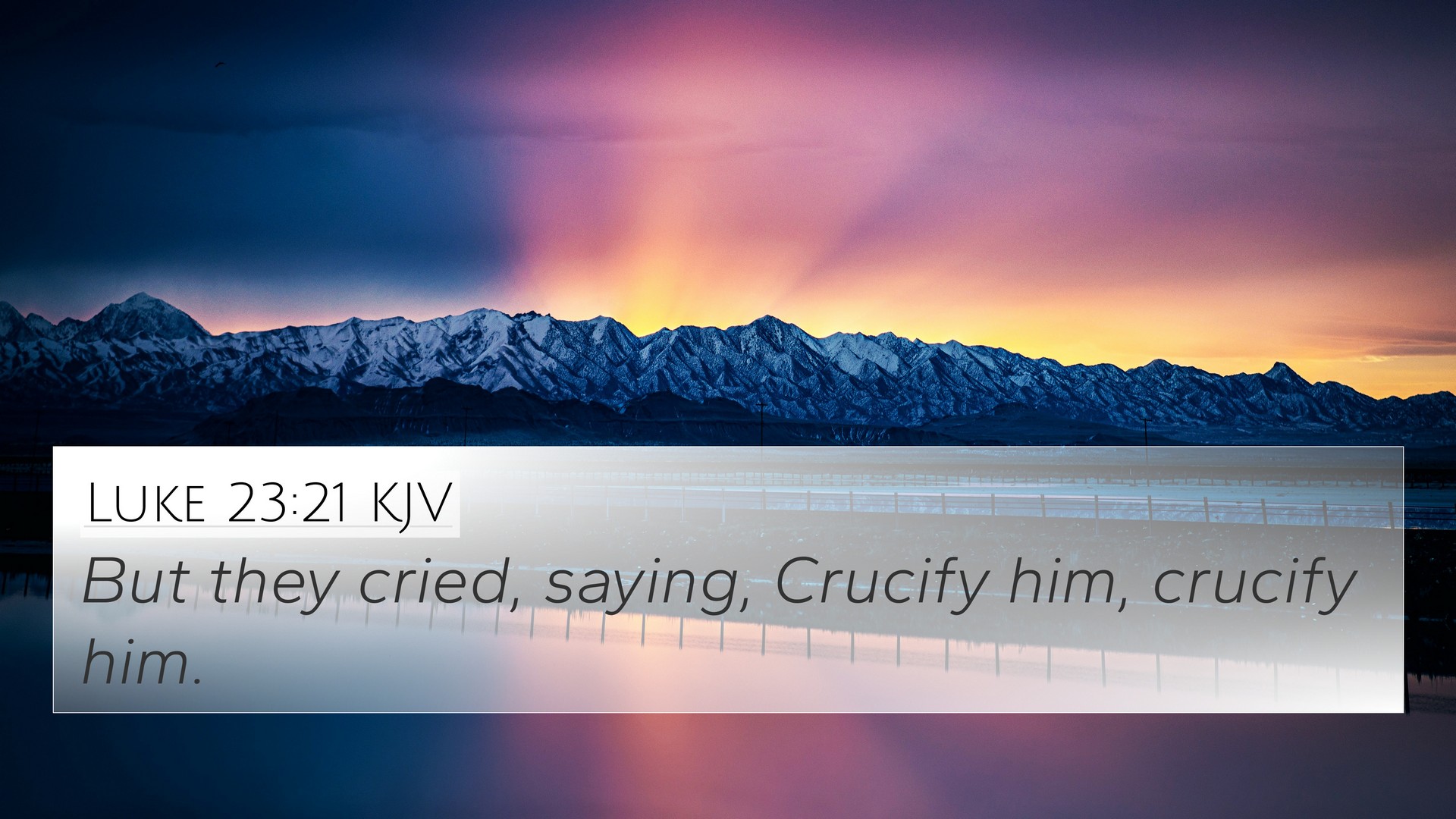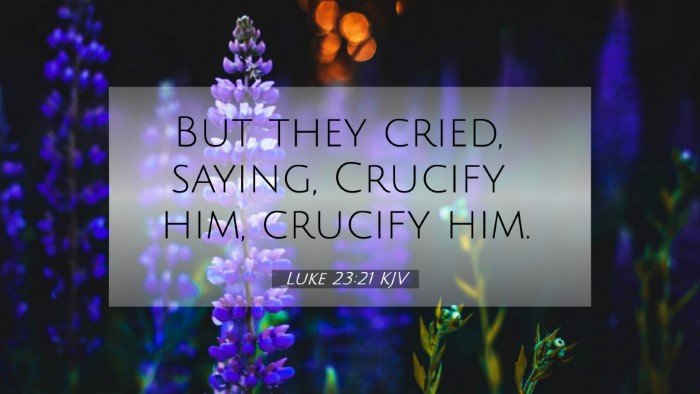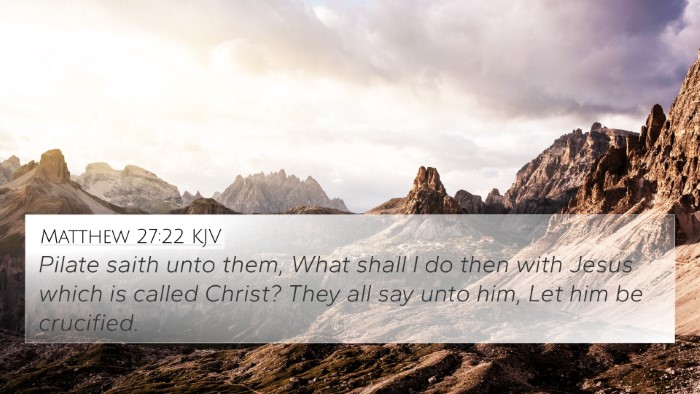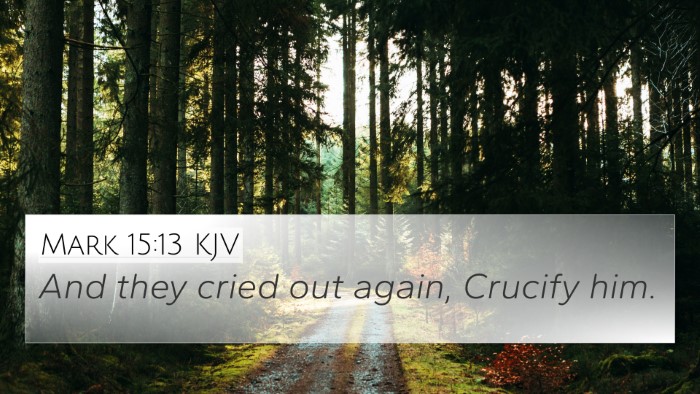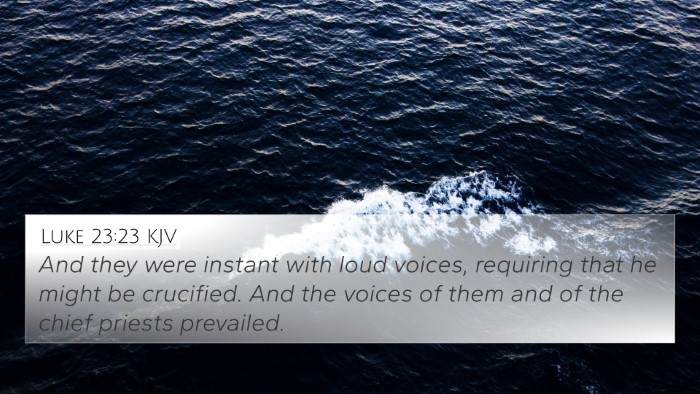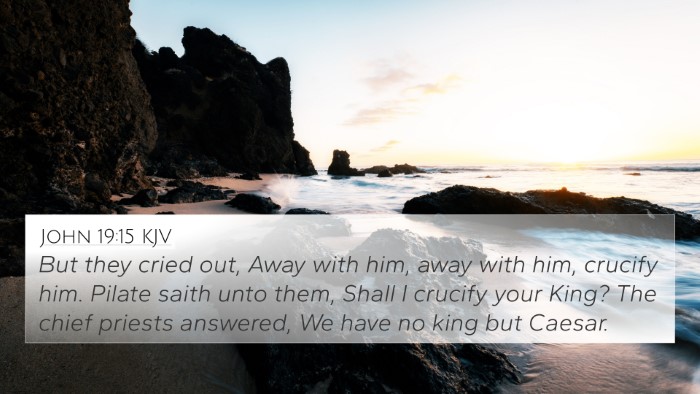Understanding Luke 23:21
Bible Verse: Luke 23:21 states, "But they shouted, saying, Crucify him, crucify him."
Verse Context
This verse is situated in the climactic moment of Jesus' trial before Pilate. The religious leaders and the mob demanded the crucifixion of Jesus, contrasting the earlier recognition of his miracles and teachings with the urgency of their demands at this critical point.
Commentary Insights
This section draws insights from public domain commentaries, specifically those by Matthew Henry, Albert Barnes, and Adam Clarke, highlighting the theological and practical implications of the verse.
Matthew Henry's Commentary
Henry observes the intensity of the crowd's desire for Jesus' crucifixion, illustrating the depravity of human nature when swayed by fear or popular opinion. He emphasizes the need for Christians to remain steadfast in faith despite societal pressures.
Albert Barnes' Notes
Barnes points out the irony in the crowd's shouts, as they called for the crucifixion of the one who came to save. He notes that their demand reflects a wider theme in scripture where humanity often resists the grace of God. The rejection of Jesus illustrates the fulfillment of prophecies regarding the suffering servant.
Adam Clarke's Commentary
Clarke highlights the significance of the events leading to this outcry. He argues that the rejection of Jesus serves as a critical turning point, emphasizing that such instances of human rejection of divine will resonate throughout biblical history. Clarke calls attention to the mob's influence, warning against the dangers of groupthink and the loss of individual discernment.
Thematic Connections
This verse not only stands alone but is intersected with other biblical themes and verses. Here are several notable connections:
- Isaiah 53:3: References the suffering servant, illustrating the predicted rejection of Jesus.
- Matthew 27:22: Pilate questions the crowd on what to do with Jesus, echoing their desire for crucifixion.
- John 19:15: The chief priests rally the crowd, displaying the manipulative power of religious leaders.
- Luke 22:53: Jesus mentions that his captors show no righteousness but act out of darkness.
- Acts 3:14: Peter highlights the crowd's rejection of the Holy One as a fulfillment of prophecy.
- Matthew 12:14: The Pharisees' conspiracy to destroy Jesus prefigures this climactic moment.
- Romans 1:28: Illustrates the consequences of a reprobate mind, tying back to the crowd's choice.
Implications for Readers
The events captured in Luke 23:21 serve as a poignant reminder of the ease with which people can be swayed towards negativity against righteousness. This calls attention to several applications:
- Awareness of Influence: Recognize the impact of societal pressures on personal faith and choices.
- The Importance of Discernment: Encouraging individuals to seek personal conviction rather than succumbing to group mentality.
- Understanding Rejection: Accepting that rejection of truth is a recurring theme within the broader biblical narrative.
Conclusion
The clarion call of Luke 23:21 reminds us to carefully analyze the motivations behind human actions. By examining the parallels within scripture and the insights from these public domain commentaries, believers are encouraged to engage in cross-referencing biblical texts meaningfully. This will not only provide clarity but also deepen one's understanding of the overarching themes embedded in the Christian faith.
